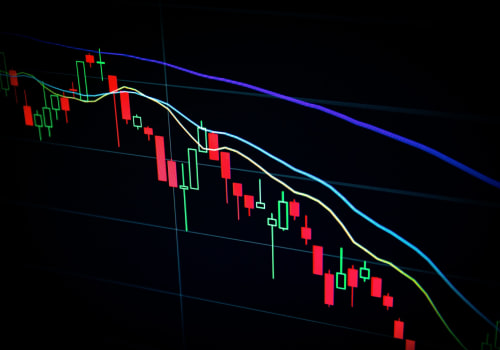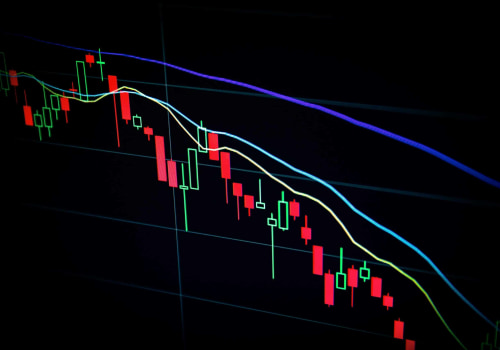Binary options trading is a popular form of investment that allows traders to make money by predicting the future direction of an asset. High/Low options are one of the most basic forms of binary trading, and are a great choice for traders who are just getting started in the world of binary trading. With High/Low options, traders can choose whether they think an asset will end up above or below a certain price at the expiry of the trade. In this article, we'll take a look at the different types of High/Low options, so you can make an informed decision on which type best suits your trading needs.
High/Low Options
are one of the most popular types of binary options trading available today.They provide traders with the opportunity to make profits from price movements in the market, without needing to predict the direction of the price movement. In this article, we'll explore the different types of high/low options available, and how they can be used to make profitable trades. The primary types of high/low options are call/put options and one touch options.
Call/put options
allow traders to make a prediction on whether the price of an asset will rise (call) or fall (put) by the expiry date.One touch options
, on the other hand, require the price of an asset to touch or exceed a certain level in order for the option to be in the money. In addition, there are several variations of high/low options available.For example, boundary options require traders to predict whether the price of an asset will remain within a certain range until expiry.
Ladder options
require traders to predict whether the price of an asset will reach a certain level at certain times before expiry. Finally, there are also high/low spread options, which require traders to predict whether the spread between two assets will be above or below a certain level at expiry. Traders should keep in mind that each type of high/low option carries its own risk profile and they should choose one that fits their trading strategy. For example, traders who are bullish on the market may opt for call/put options, while traders who are bearish may opt for one touch or boundary options.On the other hand, ladder and spread options may be better suited for traders with more advanced strategies. No matter which type of high/low option is chosen, it is important for traders to understand how each one works and how they can be used to make profitable trades. By understanding the different types of high/low options available, traders can gain an edge in their trading and maximize their profits.
One Touch Options
One Touch options are a type of binary option that pays out when the underlying asset reaches a predetermined price. This predetermined price is known as the ‘touch’ price. When the asset’s price reaches the touch price, the option will be ‘in the money’ and the trader will receive a payout.One touch options can be used to make profitable trades, as they allow traders to take advantage of favorable market movements without needing to predict the direction of the price movement. One touch options are best used when markets are trending in one direction or are range-bound. If markets are trending, traders can use one touch options to take advantage of this momentum and generate profits. On the other hand, if markets are range-bound, traders can use one touch options to identify levels at which the price is likely to break out of the range and generate a profit. One touch options can also be used in combination with other trading strategies to increase the likelihood of success. For example, if a trader believes that a breakout is likely but wants to hedge against the possibility that it won’t happen, they could use one touch options in conjunction with other strategies such as trend-following or range-trading.
Boundary Options
Boundary options are a type of binary option that allows traders to make profits from price movements that stay within a predefined range.This range is referred to as the boundary, and it is set by the broker when the option is purchased. If the price of the underlying asset stays within this range when the option expires, then the trader will receive a payout. Boundary options are an excellent way to profit from markets that are range-bound or moving slowly, as they allow traders to take advantage of the market’s lack of volatility. They can also be used to hedge against losses in other trades.
To make a profitable trade with boundary options, traders need to accurately predict whether the price of the underlying asset will stay within the boundary or not. This requires traders to have a good understanding of how the markets are moving and where they are likely to go next. Traders should also be aware that boundary options often have higher payouts than other types of binary options, but they also come with higher risks. Therefore, it is important for traders to manage their risk carefully when trading boundary options.
Ladder Options
Ladder options are a type of binary option trading that provides a unique way for traders to make profits from price movements in the market.This type of trading is similar to traditional high/low trading, but it allows traders to set several price targets at once. By doing this, traders can create a ladder of price points that they can use as a guide when making their trades. When trading with ladder options, traders will select a starting price and then set a series of higher and lower prices. If the price of the underlying asset reaches any of the levels on the ladder, the trader will be rewarded with a payout.
This can be a great way to increase profits from binary options trading as it offers traders more opportunities to make successful trades. The amount of risk involved in ladder options trading depends on the number of levels set on the ladder. The higher the number of levels, the greater the risk that the trader takes on when making trades. However, with more levels on the ladder, there is also potential for greater rewards as well.
Ladder options trading can be used to increase profits from binary options trading, but it does come with an increased level of risk. Therefore, it is important that traders understand how these types of options work before using them in their trading strategies.
Call/Put Options
Call/put options are a type of binary option that allows traders to make profits from price movements in the market without needing to predict the direction of the price. When buying a call/put option, a trader will be betting that the price of the underlying asset will either rise or fall within a predetermined period of time. When trading call/put options, the trader will have two outcomes: the option will either expire in-the-money, meaning that the trader has made a profit, or out-of-the-money, resulting in a loss. If the trader expects the price of the underlying asset to rise, they can purchase a call option; if they expect it to fall, they can buy a put option. Call/put options can be used to make profitable trades in various ways.The most common strategy is to buy a call/put option when the price of the underlying asset is expected to move in one direction, then wait for the price to reach a certain level before selling it. This strategy relies on correctly predicting the direction of the price movement in order to make a profit. Other strategies include using technical analysis such as chart patterns or indicators to identify trends and determine entry and exit points. Call/put options can also be used to create hedges against existing trades. By buying a call/put option, traders can reduce their risk exposure if their original trade does not go as planned.
This type of hedging strategy can be used to protect profits or limit losses.
High/Low Spread Options
High/Low spread options are a type of binary option that allows traders to benefit from price movements in the market without needing to predict the direction of the price movement. This type of option allows traders to buy a call or put option and receive a fixed payout based on how far the underlying asset moves in either direction. The payout is determined by the size of the spread, which is the difference between the strike price and the current price of the underlying asset. Traders can use high/low spread options to make profitable trades by taking advantage of a wide range of market conditions.For example, if an asset is trading at a low point and is expected to rise in the near future, traders can buy a call option with a higher strike price and a wider spread to maximize their potential profits. On the other hand, if an asset is trading at a high point and is expected to fall in the near future, traders can buy a put option with a lower strike price and a wider spread to increase their potential profits. High/Low spread options can also be used to hedge positions in the market. For example, if a trader has an existing long position in an underlying asset and believes that it will soon fall in price, they can purchase a put option with a lower strike price and wider spread to protect their position from losses.
Similarly, if a trader has an existing short position in an underlying asset and believes that it will soon rise in price, they can purchase a call option with a higher strike price and wider spread to protect their position from losses. High/Low spread options are an effective way for traders to take advantage of different market conditions and protect their positions from losses. By understanding the different types of high/low spread options available, as well as how they can be used to make profitable trades, traders can increase their chances of success in binary options trading. High/low options provide traders with a simple and effective way to capitalize on price movements in the market without needing to predict the direction. There are several different types of high/low options available, including call/put, one touch, boundary, ladder, and spread options.
By understanding the features of each type of option and selecting the one that best fits their trading strategy, traders can increase their chances of making successful trades.






